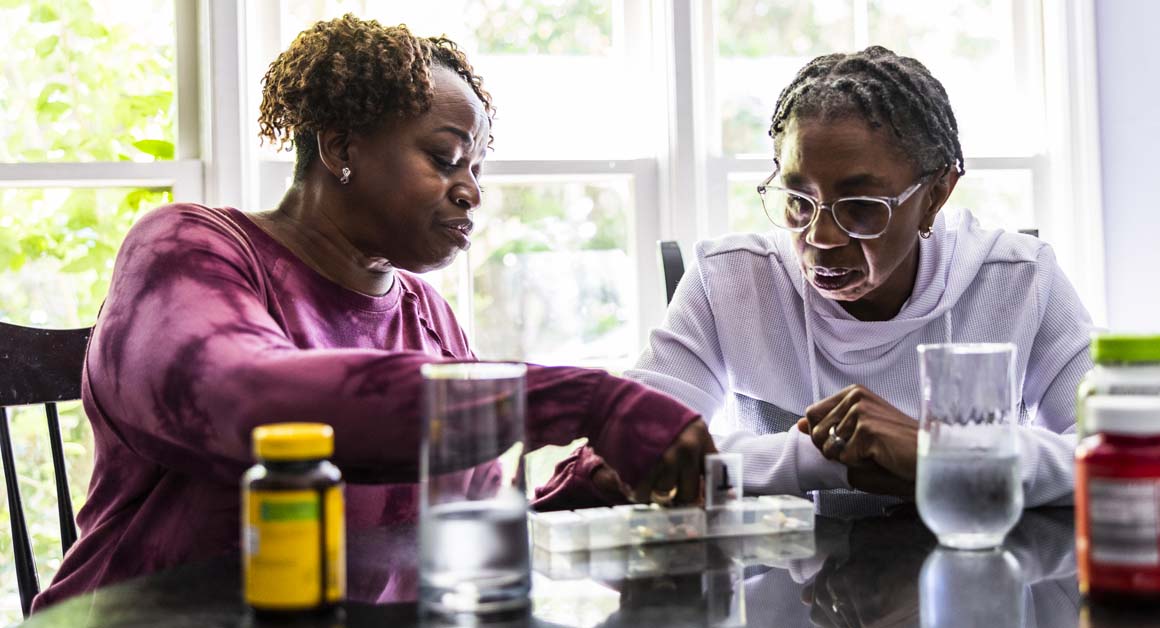When Clinicians Care for LGBTQ+ Patients in Their Homes

To receive healthcare from clinicians, patients typically arrive in physician offices, medical clinics, outpatient facilities, or hospitals. In these settings, patients can control how much and what kind of information they share about their health and everyday life.
With hospice care—and its unique focus on end-of-life care provided wherever the patient calls home—a team of medical professionals visits patients in their apartments, condos, homes, nursing homes, and assisted living communities.
For LGBTQ+ patients, the presence of nurses, doctors, home health aides, chaplains, and social workers in their very private, personal living spaces can intensify feelings of vulnerability—especially if they have not willingly shared details of their sexual or gender identity among close friends, coworkers, family members, or their healthcare providers.
“Some patients will take down their family pictures when the hospice team comes to visit and then put them back up when the team leaves,” says Dr. Joseph Shega, chief medical officer for VITAS. This unique vulnerability among LGBTQ+ patients, he points out, requires a conscious commitment from hospice teams to deliver safe, nonjudgmental care that respects patients, their partners, their living spaces, and their privacy.
Let Patients Set the Parameters
To honor the patient’s privacy and dignity, healthcare providers can observe the cues the patient presents.
Renwick Bell, a same-gender-loving VITAS chaplain in Broward County, Florida, says, “As their chaplain, I have to respect and honor what they’ve shown me or shared with me. My approach is to let patients and families set the stage for how much information they divulge and how they do it.”
Other VITAS employees and LGBTQ+ advocates agree it’s important to give patients and their families/partners the freedom to share information on their own timeline. Survey data backs up notions of concern about trust in the healthcare system.
Legitimate Concerns Among LGBTQ+ Patients
According to a 2022 AARP survey, 85% of respondents—a group comprising more than 2,000 LGBTQ+ adults age 45 and older—said they are concerned about discrimination based on sexual orientation.
Additionally, a 2024 KFF survey on discrimination in American healthcare found:
- LGBTQ+ adults were more than twice as likely as non-LGBTQ+ adults to report a negative healthcare experience in the last three years, including being treated unfairly or with disrespect. 33% of LGBTQ+ adults reported such an experience compared to 15% of non-LGBTQ+ adults.1
- 61% of LGBTQ+ adults reported at least one negative experience with a provider, including a provider assuming something about them without asking, suggesting they were personally to blame for a health problem, ignoring a direct request or question, or refusing to prescribe pain medication.
- Six in 10 LGBTQ+ adults said they prepare for insults from a healthcare provider or staff or feel they need to be careful about their appearance to be treated fairly when seeking care.
At VITAS, members of care teams undergo training on providing compassionate, sensitive care to LGBTQ+ patients and their partners/families—a practice recommended in a 2020 study of 865 palliative care providers (Stein, G., et. al.) in a variety of US healthcare settings. The study found that:
- 21.3% of care providers observed discrimination toward transgender patients
- 15% observed the spouse/partner of LGBT patients having their treatment decisions disregarded or minimized
- 4.3% observed a spouse/partner or surrogate being treated disrespectfully
VITAS experts agree that many factors—including family dynamics, previous or ongoing rejection, religious or societal pressures, and past experiences with prejudice or shame—can trigger and heighten feelings of vulnerability.
“Overall, that happens less, but it’s still happening, especially with some of our older patients who have been in relationships for years but have never disclosed to anyone that they were gay,” says Dr. Shega.
He agrees that LGBTQ+ patients often feel more exposed and vulnerable in their own homes, especially if they were rejected by their families when they came out or disclosed their HIV/AIDS diagnosis. As a hospice patient’s illness worsens or as the need for care intensifies, he adds, feelings of vulnerability can increase in conjunction with the need to divulge more personal information.
Providing Compassionate Care in the Home Environment
“We have to stay completely objective in our clinical and psychological approach to care,” says VITAS' Broward County general manager Jaime Collazo, an active member of and advocate for the LGBTQ+ community in South Florida.
“Hospice raises entirely new levels of intrusiveness and divulgence, and we can’t let any kinds of judgments influence or impact the care we provide,” says Jaime.
Other VITAS employees who identify as LGBTQ+ praise the company for its continuing embrace of “all-inclusive care,” regardless of a person’s faith, race, culture, traditions, or sexual identity.
Sensitivity to Unique Challenges
The LGBTQ+ population is one of the most understudied and underserved in health disparities research. Yet, approximately 3 million older adults identify as members of this community.
Considerations for providing care to the individuals within this population in their homes include:
- Institutional distrust influences care transitions. Give patients permission to divulge information on their own terms and timelines.
- If you need specific information, ask simple questions without judgment or prejudice, and give patients the time and space they need to answer.
- An inclusive, culturally sensitive environment includes sensitivity training for staff and a designated liaison, among other protocols. In a 2021 study, about 56% of health and social care professionals said they were not knowledgeable about LGBT+ issues and needs in palliative and end-of-life care prior to specific training.2
- Encourage patients and their partners/families to attend VITAS-sponsored support groups for caregiving and grief support
This article was originally published in June 2022 and updated in May 2024.
1 Montero, A. et al. (2024). LGBT Adults’ Experiences with Discrimination and Health Care Disparities: Findings from the KFF Survey of Racism, Discrimination, and Health. Retrieved from: https://www.kff.org/racial-equity-and-health-policy/poll-finding/lgbt-adults-experiences-with-discrimination-and-health-care-disparities-findings-from-the-kff-survey-of-racism-discrimination-and-health/
2 Chidiac, C. et.al (2021). Development and evaluation of an LGBT+ education programme for palliative care interdisciplinary teams. Palliative Care and Social Practice. Vol. 15:1-10.
Upcoming Webinars for Healthcare Professionals

Check Hospice Guidelines
Get diagnosis-specific guidelines in our hospice eligibility reference guide.
Hospice Guidelines by Diagnosis Refer Your Patient
